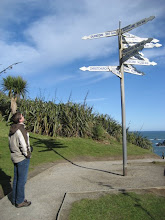Walking has long been and probably will continue to be important. For me it is part of a happy and healthy mobile lifestyle.
Walking was part of my life in various ways in the past. Summer visits to the houses of each set of grandparents involved a daily walk. During a few years of grade school I lived a block from public land in which I hiked and daydreamed short stories I would write. During high school I walked several miles to and from each Medford school I attended, each day choosing a different route than the previous. Later I again lived on the edge of public land. During undergraduate education I walked around Corvallis--especially the Oregon State University campus--alone or with friends, thinking or talking about life. During and after graduate school I similarly liked to walk the University of Washington campus.
My business partner recently revived his own childhood love of walking. A few years ago when my company moved to from the University District to Westlake, I encouraged walking to lunch in South Lake Union the way we had walked to lunch on The Ave. At most we would walk half a mile. Then he purchased a pedometer to compete with friends. Now he tracks his walks, totaling 10,000 steps per day, around the office and his neighborhood. He even ordered an Omron HJ-720ITC pedometer for me.
Consequently I have begun tracking my walking as well. I suspected I already met the guideline of 30 minutes of moderate activity 5 to 7 days per week, in walking to the bus, to coffee, to lunch (e.g., to Paddy Coynes in South Lake Union), and on the elliptical trainers (at the IMA). Now I am carrying a pedometer to verify that.
It is helpful to distinguish moderate activity like brisk walking from other steps. The U.S. Department of Health and Human Services cites publications suggesting that 30 to 60 minutes of activity broken into smaller segments of 10 or 15 minutes throughout the day has significant health benefits. The Omron HJ-720ITC has an aerobic step function that displays the minutes walked and number of steps walked at more than 60 steps per minute for more than 10 minutes continuously.
This past week provides me preliminary step estimates for moderate activity. Evidence suggests 30 minutes of moderate activity is equivalent to 3000 to 4000 (aerobic) steps, and that even sedentary adults accumulate 5000 (other) steps. I'm pleased that my average aerobic walking time was 35 minutes per day (3860 steps), but this week only three days had more than 30 minutes (3240 steps). Other (not aerobic) steps ranged from 3310 to 8740 with an average of 6480. An average day for me with 30 minutes of moderate activity therefore would have 9720 steps (though carrying a pedometer may have an effect like the Hawthorne effect). Perhaps I'll join 10,000 steps.
In addition to the health and happiness benefits of moderate activity, there are lifestyle benefits. Walking to and from the bus stop is part of a lifestyle in which I drive cars less and read more books on the bus. It is also part of a lifestyle in which I am fit enough for adventure.
